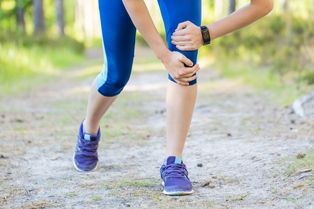
Runner's Knee is a common term which is used to describe any condition that causes pain around the kneecap or patella. Examples of these conditions are anterior knee pain syndrome, patellofemoral malalignment, chondromalacia patella, and iliotibial band syndrome.
The most common cause of runner’s knee is running but some activities that cause repeated stressing of the knee joint can result in this disorder, including walking, skiing, biking, jumping, and playing soccer among others.
Runner’s knee has been found to be common in women than in men, most especially middle-aged women. Individuals who are overweight are at high risk of developing runner’s knee.
What are the Causes of Runner’s Knee?
There are numerous factors which have been found to be responsible for runner’s knee; examples include one or a combination of the following factors:
1. Training Errors. A sudden increase in volume or intensity of training can result in excessive stress on the patellofemoral joint. Similarly, insufficient time to recover or overwork on the hills can do the same thing.
2. Excessive use and overtraining of the knee tension. Long time of intense use and training can cause runner’s knee, even in the most conditioned athletes, if the time needed for recovery is not enough. For example, a runner who runs a particularly rigorous week of training can develop runner’s knee pain.
3. Injuries. Ankle, hip, or knee injuries can change the biomechanics of the knee and eventually, lead to the symptoms of runner’s knee.
4. Focal weakness. Weak or underdeveloped thigh or hip muscles can make the patellofemoral joint to endure a larger stress burden with activity. As time goes on, this can cause the development of runner’s knee.
5. Excessive body weight. Excessive body weight can cause unwanted stress on your knees. Walking on flat ground, each step puts 1.5 times individual’s body weight worth of pressure on their knees.
6. Flexibility. Especially tight quadriceps (top of thigh), gastrocnemius (calf), iliotibial band (outside of thigh), or hamstrings may predispose someone to runner’s knee.
8. Gender. Women are at higher risk of developing runner’s knee, this is because women have wider hips and their knees are also different from that of men.
Some lifestyle factors can also increase the chances of developing runner’s knee. For example, a person whose occupation required frequent squatting, such as a carpet layer, would be more likely to develop a runner's knee.
What are the Symptoms of Runner’s Knee?
The unique feature of runner’s knee is a dull, aching pain around or behind the kneecap, or patella, most especially where it connects with the lower part of the thighbone or femur.
Pains can be felt when:
• Walking.
• Climbing or descending stairs.
• Squatting.
• Kneeling.
• Running.
• Sitting down or standing up.
• When you sit for a long time with the knee bent.
Sometimes, when iliotibial band syndrome is involved, the pain is more acute beyond the knee. This is the point at which the iliotibial band which runs from the hip to the lower leg, connects to the tibia, or the thicker, inner bone of the lower leg.
Runner's Knee Treatment
Treatment for Runner's Knee requires restoring the circulation and blood flow to the affected structures in your knee. Pain is caused when swelling, inflammation and decreased circulation generate a blockage, which causes blood flow to be interrupted or slowed. Treatment for this issue requires breaking up the accumulated fluids in your knee to allow for improved healing and quicker recovery.
Products recommended for symptoms of swelling, redness, pain, and inflammation, and if coolness makes your pain feel better:
Ice Substitute Poultice
Bruise Relief Liniment
Muscle Therapy Massage Oil
Products recommended when swelling and inflammation are gone, but you still feel pain, stiffness, weakness, and/or sensitivity in cold and damp weather, and if heat makes your pain feel better:
Pain Relief Liniment
Tendon and Ligament Poultice
Muscle Therapy Massage Oil





